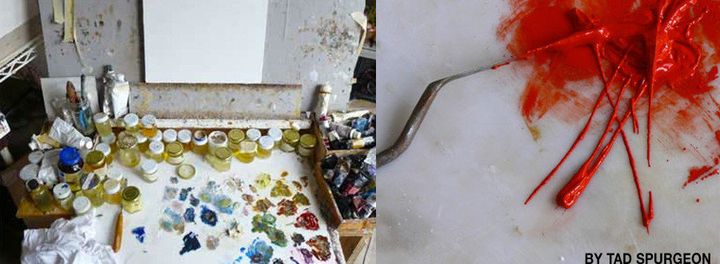
So many artists think they want to work with an art gallery. Many 'fall' for the first gallery that makes them any offer. This doesn't work better than most shotgun weddings. Having a gallery should be a choice.
There are a lot of trade-offs between having and not having an art gallery. One of the largest is the amount of work a gallery may or may not do for you -- and if you are entering a relationship with a gallery what they do for you should be discussed.
We know that most galleries tend to take a 50 percent commission on the sale of consigned art. That's a hefty chunk. Is it worth it?

A gallery may do a lot of your non-art-making work for you: catalog images, keep track of sales, provide storage, place advertisements for your art, grow relationships with collectors, find other representation for you, insure your art on their premises, take your work to art fairs, enable or pay for shipping to collectors and exhibits, seek commissions, assist with career strategies, orchestrate your career, pursue museum shows and of course, sell your art. That's a lot.
If you don't have a gallery, all those chores are going to remain yours. Ultimately, your career is your responsibility -- even if you have a relationship with an art gallery. Often it is important to defer to the gallery as they make decisions about what to show, how it is installed, what the lighting looks like, and how often you get a show. An ongoing discussion about these issues is not out of the question, but you do not want to be in a situation where the gallery feels you are meddling. You do want to feel that you are a team with a shared interest -- your art -- and you trust one another. But if you are sufficiently unhappy with how the gallery fulfills your expectations it's time to move on. There needs to be an attitude of mutual respect and appreciation that the relationship basks in.
Say you are an artist who wants your art included in museum exhibits. Then it's probably imperative that you work with a gallery, and preferably a gallery that exhibits at the better art fairs. The thinking is simple. Most museum curators are lucky if they can make two studio visits a month, but they all go to art fairs and cruise up and down the aisles to 'take the pulse' of what's going on. At an art fair you may be the pulse. Alone in your studio your work is not reaching the same number of eyeballs, and doubtfully many curators.
But not all artists care about museum exposure. Some are thrilled making a solid living, growing their own collectors, seeking exhibition opportunities and individual sales. Others are delighted working with art consultants who feel they can get a better deal buying directly from an artist. Some have long-term corporate relationships -- like a hotel chain that buys their art in bulk.
There is not a singularly perfect answer. A relationship with a gallery is not a cornucopia. The artist becomes part of a team, and with that has new responsibilities; one of which is to act honorably and not sell art from their studio without the gallery's knowledge. A few galleries are fine with this, but very few, and before upsetting the apple cart, it is wise to have an understanding with a gallery about what is expected.
In the Klein Artist Works course we talk about contracts and consignment agreements. Most galleries do not have contracts with the artists, but almost all have (and definitely should) have clear consignment agreements that show where the art is and that it is insured while on the gallery's premises.
A relationship with a gallery is a marriage of sorts. It'll have ups and downs, and it's a commitment that needs to be honored and worked on.
Over the last decade the function of art galleries has changed, primarily because of the Internet. Artists and collectors can more easily communicate with one another. More galleries have a one-time relationship/exhibition with artists and do not represent them.
And there are alternative models of what a gallery can be. More apartment galleries have popped up, and last for a few years. Some grow to be a full-fledged gallery and others obsolete themselves.
Not all galleries have physical spaces anymore. Some exit solely online and others are predominantly online, but surface for art fairs, and occasional special exhibits. Some represent artists exclusively. Some don't restrain the artists at all.
There are lots of variables to how an artist navigates the artworld. A significant collector I did a webinar with accurately pointed out that there isn't really an art world, but instead that there are lots of art villages. An artist is well served by figuring out which art villages fit, as well as which art villages resonate the best. Right there are the biggest clues about which of very many directions an artist should pursue.
Thank you,
Paul Klein